
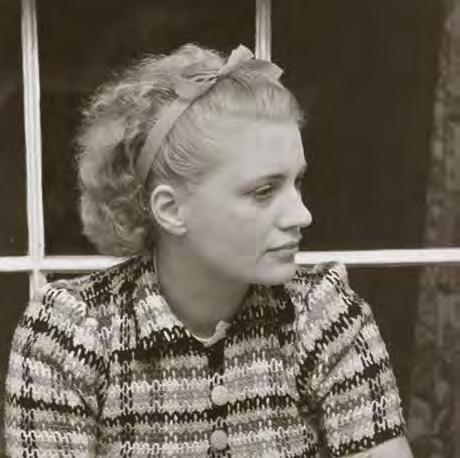
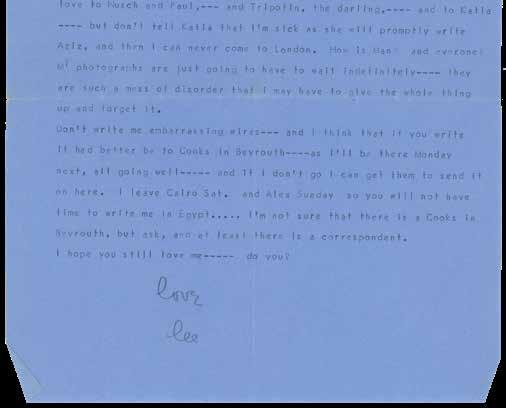
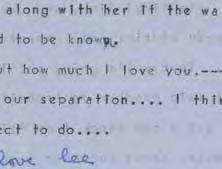
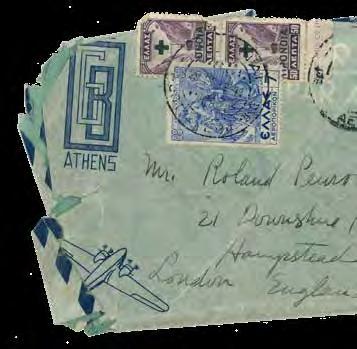

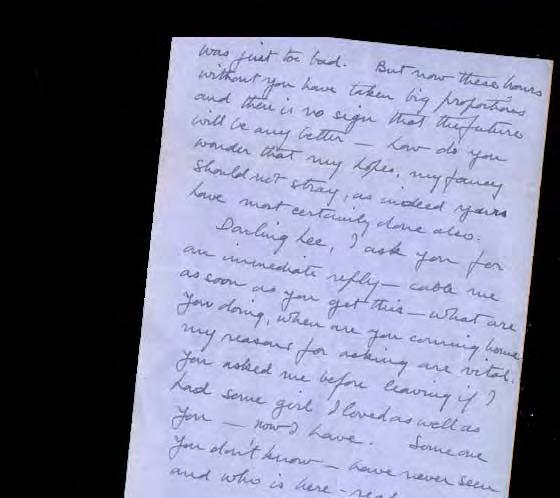
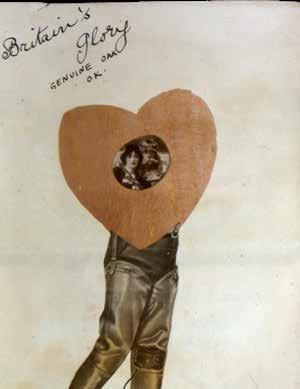


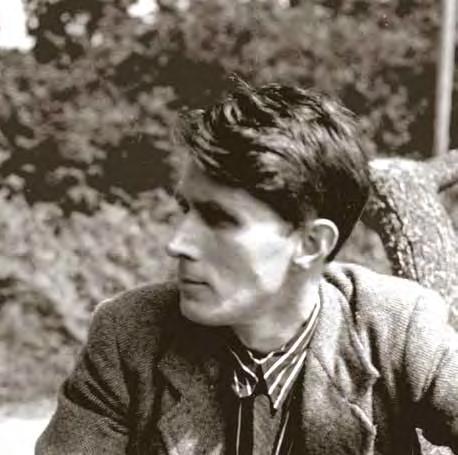


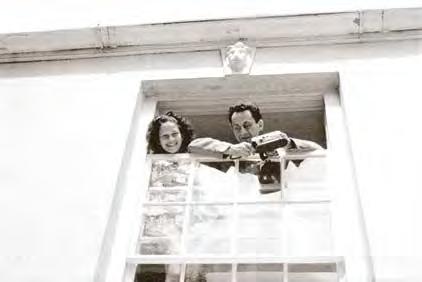

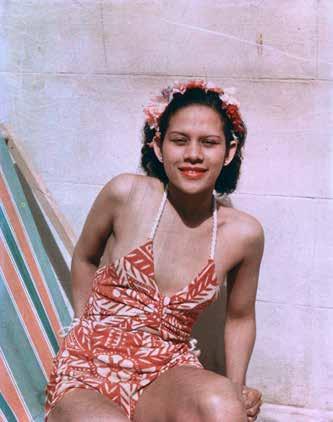

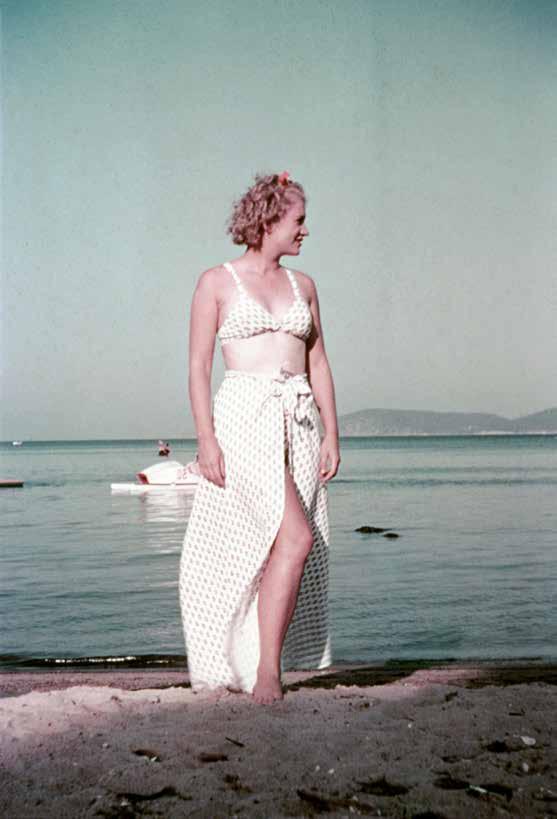
6TH OCTOBER 1937
ROLAND ON CHANNEL FERRY TO LEE IN ALEXANDRIA
Darling,
Here I am on a boat too and thinking every minute of you on yours – at last I’ve got a moment for this poor substitute – letter writing. There were so many things I wanted to say to you on the telephone but I was hardly a match for anything so unexpected and so longed for. Yesterday passed in a frantic race to get done all I wanted. While I watched the clock to see midday come with you leaving Marseille I rush from Lefebre to Zervos and Zervos to Breton and Breton to Pierre fixing up all sorts of odds and ends that had to be done. In the afternoon I finally found Picasso and went with him and Dora to his studio. All the Mougins pictures were arranged round the walls with the exception of about half a dozen including my “portrait” which has already preceded me to America. As I thought my few words at Mougins had not been wasted and there was no difficulty in getting your “portrait” which
Roland had been determined to meet Picasso in March of 1937 as he found, in Christian Zervos’ magazine Cahiers d’art 1936, an illustration of a painting that fascinated him. He wanted to see it for real and perhaps buy it so through Paul Eluard he made connections with Picasso and finally got his wish. In buying it he became friends with the artist as Picasso recognised in this quiet, shy Englishman the man who could fall in love with and understand challenging art. That friendship was to last for many many years. Whilst in Mougins, Picasso painted Lee Miller’s portrait, six times. It was a wonderful sequence of glorious colour and ‘joie de vivre’. One painting in particular Roland felt really captured Lee with its bright pink background and yellow face, symbolizing her warmth and intellectual brilliance.
Antony Penrose
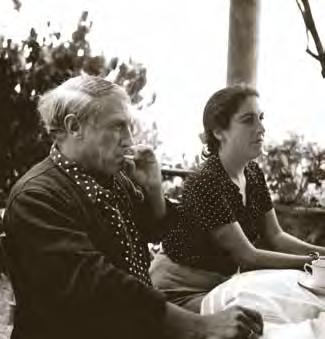
I took away with me in triumph; there was no time to get a frame or get it sent off so I have got it with me and will profit of its marvels while I look round for a suitable frame in London. It will then take the boat to you darling the inspiratrice of my chef d’oeuvres.
Finally, I was about to pack and prepare for dinner with Man, I got a note from Max, just arrived in Paris. I at once went to see him and found him tearing out his last white hairs – in fact it was just as well that he should do it himself otherwise the two rivals will certainly do it for him. He was in a hopeless dilemma and no nearer a solution than when he left Cornwall. He wants in spite of all I could say to the contrary, to make them live together and I suppose die of asphyxiation from their curses. But at the moment Marie Berthe holds the field again and C is left down in the Ardêche in a frenzy of despair. They both seem to be behaving very hysterically and Max who after all has been the origin of all the trouble looks like a martyr about to be consumed in flames. I was naturally at a loss to know what to say and simply told him to come alone to London when the flames got too hot.
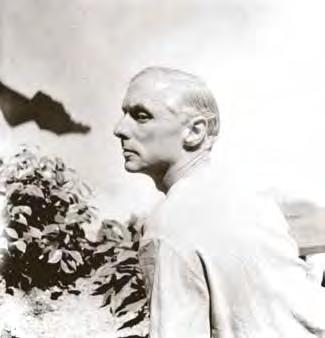
11TH OCTOBER 1937
LEE FROM SHIP TSS MOHAMED ALE EL-KEBIR –POSTED IN ALEXANDRIA TO ROLAND IN HAMPSTEAD
Darling – I’m being very conscientious and starting to form good habits – now trot out that speech you made about breaking them and changing them & getting new ones – the speech I took exception to in Mougins lunch one day – Anyway you is a habit with me, -
The awfulness of it has begun already – the heat – the bad food – the mutual suspicion and hostility life in Egypt has infected the boat - & although it is peopled by English for the most part – even they look fat & greasy. – I didn’t think it possible that so many dreadful & fatuous things could pass as thought or conversation. I wish you were here so I could really bewail & bemoan - & any way I feel so bright & remote from them all – even tho thwarted.
It rained until to-day – port holes cloud – people sick & whining – no air & damp. My fever has gone away & I’ve eaten nothing but vegetables – went swimming which was not too agreeable as a lot of other people had the same idea & the pitching of the boat made mountainous & splashing waves from one end to the other of the pool. Then sunbathed in my beautiful black Heim Pareo which I sewed myself. I’m afraid I ‘consterned’ the entire passenger list – being the only naked female aboard – everyone else is correct, in the shade knitting and drinking whisky & soda – The Egyptians talk

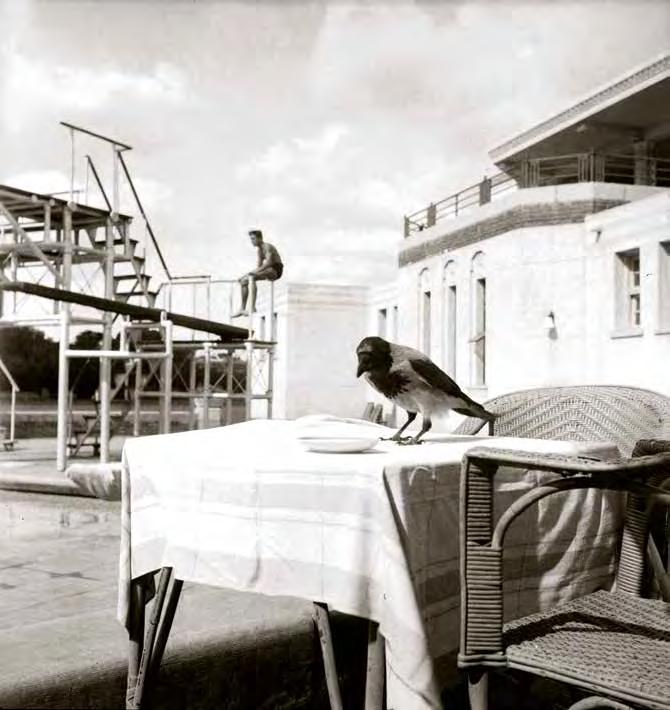
Lee had good reason to ask Roland about the Spanish civil War as she knew how passionate he was about the developments taking place. She knew that in 1936 he had gone to Barcelona with Christian and Ivan Zervos, also with Valentine and David Gascoigne. Roland went to report on rumours that Republicans were destroying ancient monuments, beautiful works of art and important heritage objects. He knew that not to be true and so went to gather evidence to prove the news was false. When he returned, nobody listened. By 1937 the Spanish Civil War was nearly over and Roland was following this with agony in his heart, being distressed at the development of the takeover by the Fascist regime and about the people he knew and respected in Spain. Roland had seen Picasso’s Guernica when it was painted and he had been incredibly moved by the passion and the horror that is contained
within. Roland toured Guernica around Britain. He had intended to raise money for the refugees from the Spanish civil war, however the first venue at the Burlington Galleries was unsuccessful with virtually nobody attending. The upper class of London, untouched by Franco, may have considered him rather nice. Guernica then went to Manchester and a further venue and finally its last setting was Whitechapel Art Gallery in London. At last there was a massive attendance. The people of Whitechapel understood that it is always the poor that are hit hardest in any conflict and they sympathised greatly with Spain so attended in their masses. For those who couldn’t afford the entrance fee they were invited to bring one pair of boots in good condition and the money raised with the boots were sent to the refugees of the Spanish civil war who were by now streaming across the Pyranees in huge numbers.
Give my love to Tripotin, find him a girlfriend and he will annoy you less with long speeches of repressed love. Or is this girlfriend really there ---- the one who didn’t answer letters to America?
Anyway I think you don’t write me often enough and this is a complaint. Also are you more astonished than I in the number of letters I write? ----
It’s probably too late now as it will have been sent back, and we don’t know where to, but in that we didn’t leave my
address at the Hotel Acropole they might have gotten my belt and not known what to do with it.
I’m putting on weight again, as I’m bored and always hungry. I have the gyppy tummy in spite of my vaccine and I’m fast becoming as lazy indolent and ineffectual as the rest of the population. I was so full of plans and energy when with you, and for the first few days here, but now everything is just dissolved in hopelessness. I can’t even get around to getting prints out of the Kodak shop. The only thing that works is that I can send letters air mail to you without standing in line two hours in the post office by giving them to the Club. If I had to do that I’d soon give up writing to you which is my only pleasure.
I look at the few snap shots I have of you and try to imagine you speaking or moving but each day it’s less movement and your voice is less strong and I’m more lonesome than before. Darling, darling,
Lee
25TH DECEMBER 1937
LEE IN CAIRO TO ROLAND IN LONDON
25th December
My darling, I wonder why I’m so sad ---- fundamentally I am, altho I spend all my time in a wild burst of gaiety ---and keep trying to find something a bit more hectic – then suffering from fits of depression, or just tiredness ---- or reaction until I’m suicidal and then cured of that by resting and sulking ---- and all the good looks and good humor that I brought back with me from knowing you are dissipated by being discontented and by being unsatisfied ---- I want to make love ---- I suppose that being in love makes lovemaking more interesting, even with someone else ---- one’s mind is on it ---- I even have pangs of jealousy about you ---funnily enough ---- not because you are making love with other people, but because I can’t also ---- and I want to.
Tonight I’m going to bed early and tomorrow there is dinner party and night club, ---- on Christmas eve the same ---then either Sat. or Monday I’m going to Luxor to stay at the Abboud’s place again ---- to come back here on New Year’s day and go the following on a desert trip to Sinai ---- to the Convent of St. Catherine’s. I saw the Sinai Mountains Sunday dawn ---- the most incredible burst of surrealist
painting imagined ---- Max Ernst in Turner’s color ---- and surely he used the edge of the pane of glass to scrape it on the canvas ---- the textures were harsh and bloody colors ---- all on a background of sentimental petunia fading up into pale green ---- on the other side of the landscape was the full moon framed by the curve of a towering mountain on one side, and open azure space on the other ---- and trembling in space underneath were two molten rose coloured sea horse shaped clouds ---- and two stars fluttering in the aquamarine and semi-precious horizon ---- I was filled with awe and relief ---- and irreality ---and confidence for all the nothingness that I would have to face forever ---- of giddiness and cleanliness and the circumstances, practically were such also that made that moment of release welcome, like the ability to pray ---We were four of us Aziz, Kate Davis Pulitzer and Henry, the boy I have such a hopeless lech for, and myself ---on a camping trip to fish from Sokhna ---- I had gotten plastered on rum and probably cooked the dinner badly but Henry got an attack of acute indigestion rather worse than
Sokhna is literally translated to mean ‘hot’ – In this letter it is short for Ain
Hussein
Omar
18TH JANUARY 1938
ROLAND IN PARIS
TO LEE IN CAIRO
My love,
Paris 18 Jan
Why the devil weren’t you here? It’s every moment I’m reminded of you and think how much you would enjoy the excitement of the opening of the Surrealist show and masses of our friends that collect for a thing of this sort. To give you an adequate description of the show itself would take volumes and at the opening last night the crowds were surging round the doors with a whole squad of police trying to keep them from smoking to death, Those who were lucky enough to get in all left me dazed and bewildered and desperately tired, when I finally got to bed at 4 a.m. I sent off from the gallery a catalogue dictionary compiled by Paul which would never have been complete without a portrait of you among the femmes surrealists, it is a marvellous document but it won’t give you much idea of the exhibition which is the thing, the least like a picture show I have ever seen. To begin with there is only one source of light in the room, which comes from a brasero in the centre, the ceiling is hung with sacks of coal so that no daylight gets in and the floor is covered with dead leaves, cork powder and moss. There are large double beds prepared and a pond with reeds and the moon reflected in it comes out from under one of them but one of the most fetching things in the entrance. At the door is Dali’s Taxi Pluvieux covered with ivy, headlights full on and lit up inside. The driver is a vicious little dummy wearing goggles and a shark’s jaw for a hat – a ravishing dishevelled blonde sits half naked on the back seat with 250 escargots de Bourgogne crawling over her while it pours with rain from the roof inside the taxi and there is a terrific tangle of
Roland had the pages professionally bound, done with great care and skill and for the cover he chose the sort of leather used for the soles of high-quality shoes. It became a beautiful object, charged with love and intimate memories.
For the first printed edition, Roland found a large quantity of surplus board covers faced with wood veneer, rather appropriately intended for a book of common prayer. The artist Hans Bellmer designed the typography of the cover. We don’t know the name of Roland’s printer at the Bradley Press but he clearly had great technical ability and a touching generosity in allowing Roland an unlimited choice of his big selection of different type faces. The use of monotype allowed the font and its size to vary from one line to the next and the layout uses widely varied lines that flow around the photographs. Roland had a close understanding of surrealism’s precursor, the Dada movement, having an affinity with the Dadaist’s anarchic views and the way their typographical style deliberately broke the rules of composition.
Roland’s poetry was definitely not Dadaist but surrealist in a style with its obliqueness and mysterious associations of words and phrases. Roland’s writing differs from his friend Paul Eluard in that it has a narrative quality. Roland engaged with the world, examined it through the lens of his surrealism and shared his findings with us. Take this sequence about the funeral of a young Romanian peasant child. (Figure 3.)
Wrenchingly the poem goes on, lamenting the loss:
Oh my darling how we miss you –how unkind of you to die.
The line how unkind of you to die poignantly transmits how the bereaved often have a sense of being a victim of the bereavement. Yet the child’s spirit is sternly warned not to try and return. For me, the death of the child can also be seen as a metaphor for the death of these innocent people’s way of life at the hands of the Nazis.
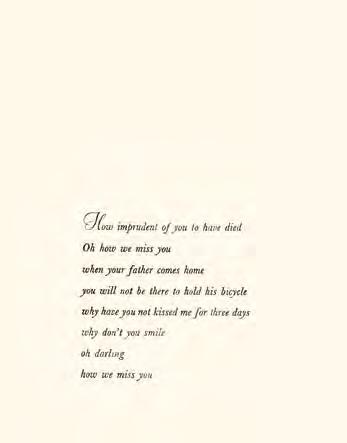
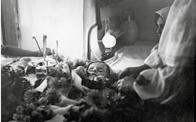
3. The Road is Wider Than Long. Page 28. Roland Penrose 1938. Lee Miller Archives Publishing Edition 2016
At this time, Roland owned The London Gallery in Cork Street. Commencing a year earlier he and his manager Edouard Mesens had published The London Bulletin, which ran right up to June 1940. It was under The London Gallery imprint that Roland published The Road is Wider Than Long in June 1939.
The first edition printed at the Bradley Press was limited to 510 copies. Ten copies were on hand-made paper and Roland used them as personal gifts with special hand drawn illuminations and dedications in the form of little details in watercolour. Simple designs, sometimes cabalistic, sit well with the printed colour and the font changes.
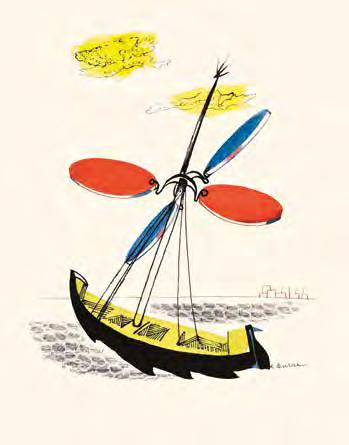
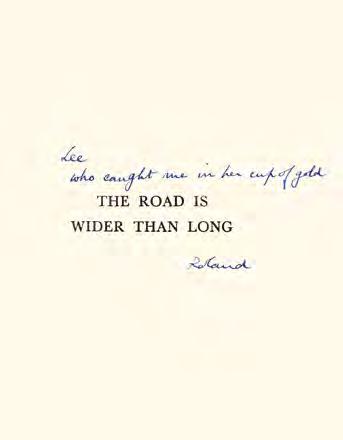
Lee Miller Archives Publishing Edition 2016
Copy Number 1 was for the person who inspired the work. “Lee, who caught me in her cup of gold”, the dedication reads. A beautiful, poetic and discreet line sensitive to the fact Lee was still married to Aziz, so Roland’s words had to be oblique enough to avoid a confrontation. Aziz knew about Roland. Lee had been honest with him, and Roland was anxious to avoid humiliating him in front of his friends and society. (Figure 4.)
A few weeks after publication Roland headed for Egypt, ostensibly as the photographer attached to a field trip by the dance expert and ethnologist Beryl De Zoete. The role
was his cover, and it was important as he wanted to avoid embarrassing Aziz.
Roland found Lee on a friend’s cotton farm in the upper Nile at Asyut. He bore with him as gifts the first copy of The Road is Wider Than Long, and a pair of gold handcuffs made by Cartier. Lee said she found both presents thoroughly captivating.
Having met Roland, Aziz who knew Lee was unhappy in their marriage was satisfied that, in Roland, Lee had found the right person to love her and care for her. He gave her his blessing, money, a steamship ticket to London and continued to love her until he died.

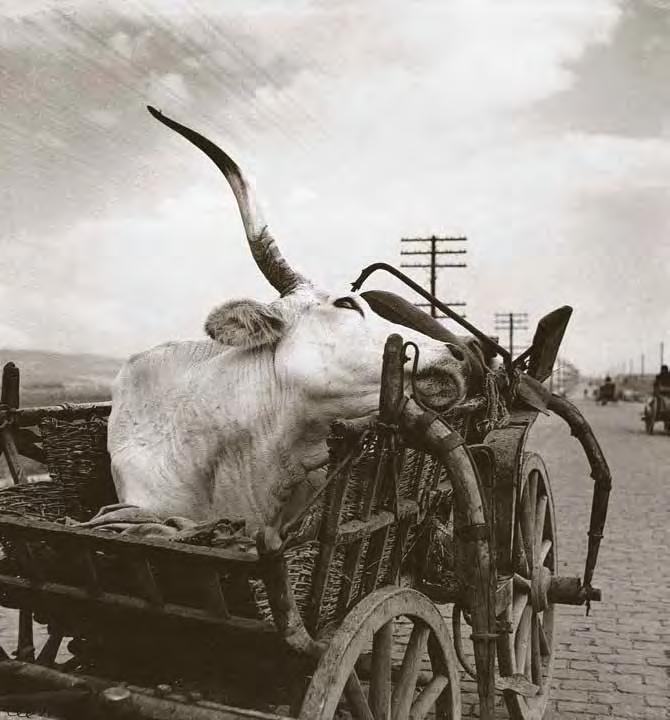


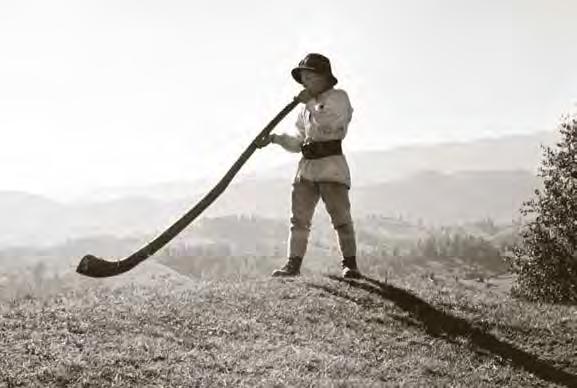

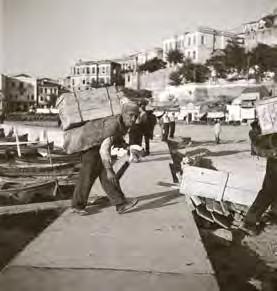

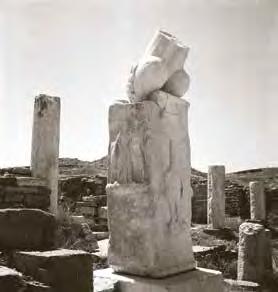
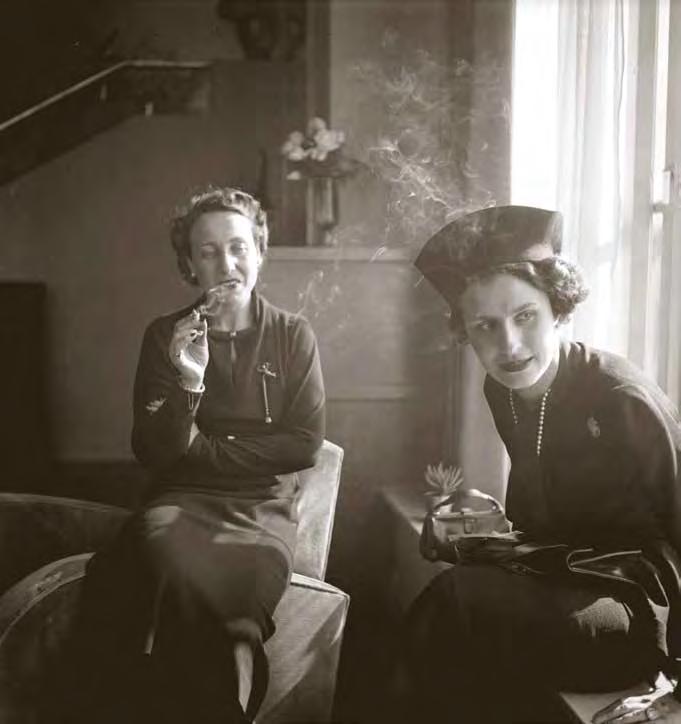

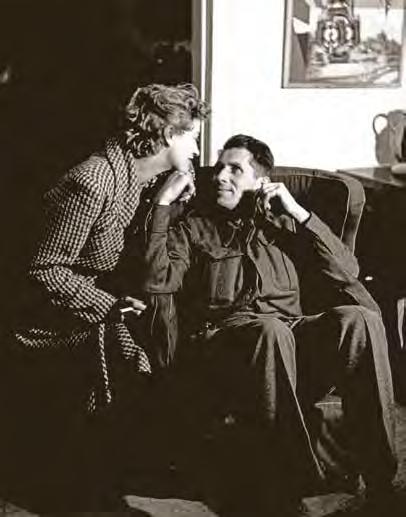

In the pre-digital age, before email and cell phones, letters carried an importance that few who were not part of those times will understand. The words on the pages of a love letter carry the nuances and emotions of love and desire, passion and anger in a deeply confidential way.
The urgency and the intimacy of the writers can be clearly felt in this collection of letters between Lee Miller, Photographer, and Roland Penrose, Surrealist Artist, as they conduct their long-distance romance. It begins with their meeting in Paris in 1937 and runs to 1939 when Lee Miller left her Egyptian husband Aziz Eloui Bey in Cairo and joined Roland Penrose in London at the start of World War 2.

In this real-life romantic drama, the period and their connections give us a supporting cast that includes Dora Maar and Picasso, Nusch and Paul Eluard, Leonora Carrington and Max Ernst, Ady Fidelin and Man Ray.
Nearly three hundred pages of love letters show that as the relationship grew it produced and supported some of the world’s best loved art and photography. The letters have never been published before and have only been read by a handful of people since they were first written.
A selection of essays from scholars contextualises the period. The contributors are; Antony Penrose, Ami Bouhassane, Hilary Roberts, Amina Diab & Hussein Omar
